Umbria’s eight-course meal stretches the boundaries of gastro excellence, not to mention waistlines
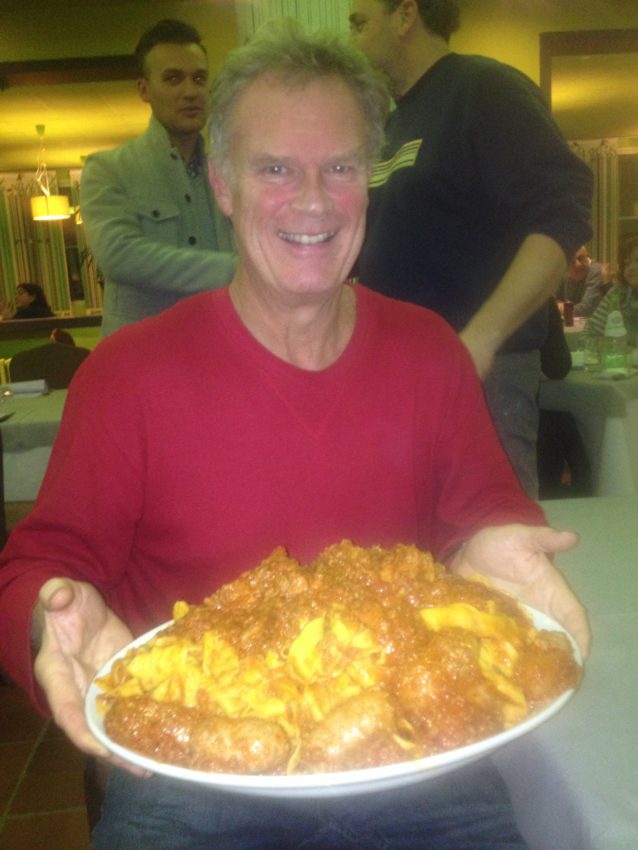
DEC. 15
FOLIGNO, Italy — In 2007 a real popular book about healthy eating came out called “Why French Women Don’t Get Fat.” Someone could easily write one today entitled “Why Italians Don’t Get Fat.” And they don’t, regardless of what you believe or see on goofy TV shows or the streets of New Jersey. Only a third of Italians are overweight, half that of the United States. Here’s the reason in one sentence: They eat healthy food in smaller portions and walk instead of drive.
With one meal, some friends and I blew that theory right into the Adriatic Sea.
We made a recent road trip to nearby Umbria, the lush, hilly region dotted with walled villages and vineyards and olive orchards. It’s Tuscany light. It has everything its more famous neighbor has at cheaper prices and fewer crowds — unless you’re in Assisi on a Sunday. My good friend, Alessandro Castellani, writes about the sport of shooting for ANSA, Italy’s wire service. Yes, Italy is good in shooting which is odd considering guns are nearly impossible to find in Italy. The United States is also very good in shooting. This is not odd.
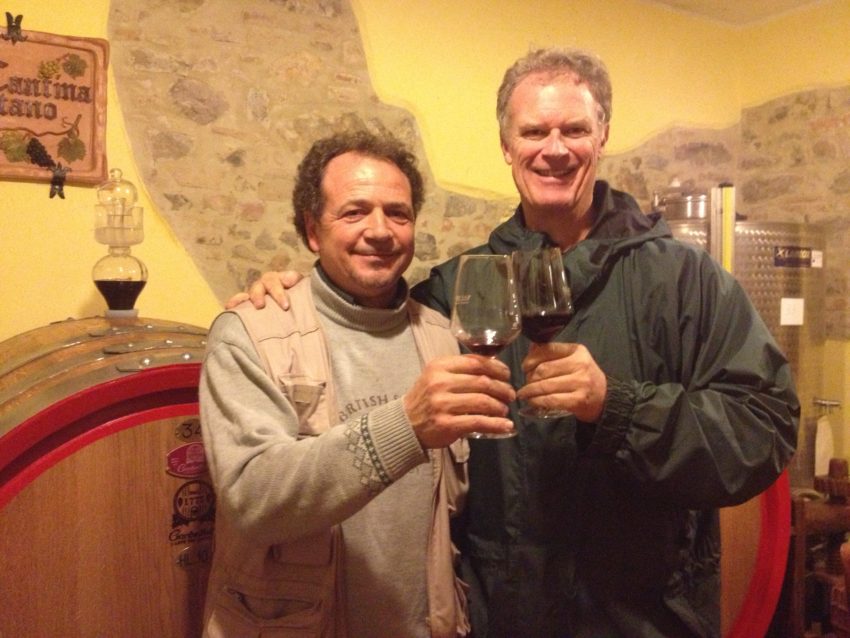
His friend is Leonardo De Mai, who has worked public relations for the International Shooting Sport Federation for three Olympics. He also runs a country inn and one, um, whale of a restaurant. De Mai is a burly, thick-armed gent with a receding hairline and a Nike sweatshirt. He could pass for an American football coach. We met him in Foligno, a medium-sized ancient Roman town of about 50,000 people and seemingly that many churches. We arrived after dark at a modest one-story structure way off the main road. De Mai greeted Alessandro with a bear hug and us with hearty handshakes as he led us inside.
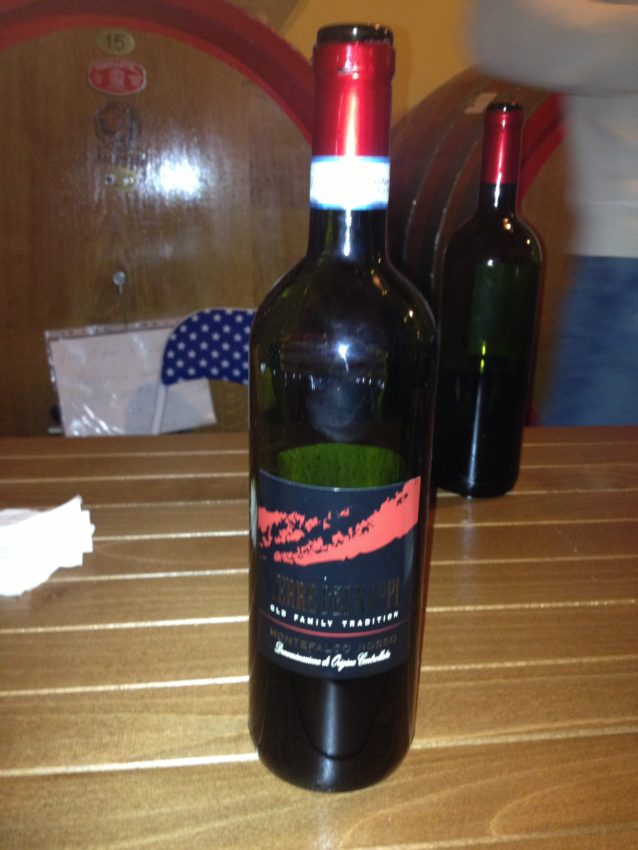
There we saw big wine barrels lined up against the wall and various wine bottles scattered about a table with a red tablecloth.
This was the cantina of Pietro Antano, De Mai’s old schoolmate who has some of the best little-known wines in Italy. This country is littered with fantastic wineries, from the steaming plains of Sicily to the mountains of Piedmont. They have big showrooms, spectacular vistas, rich marketing.
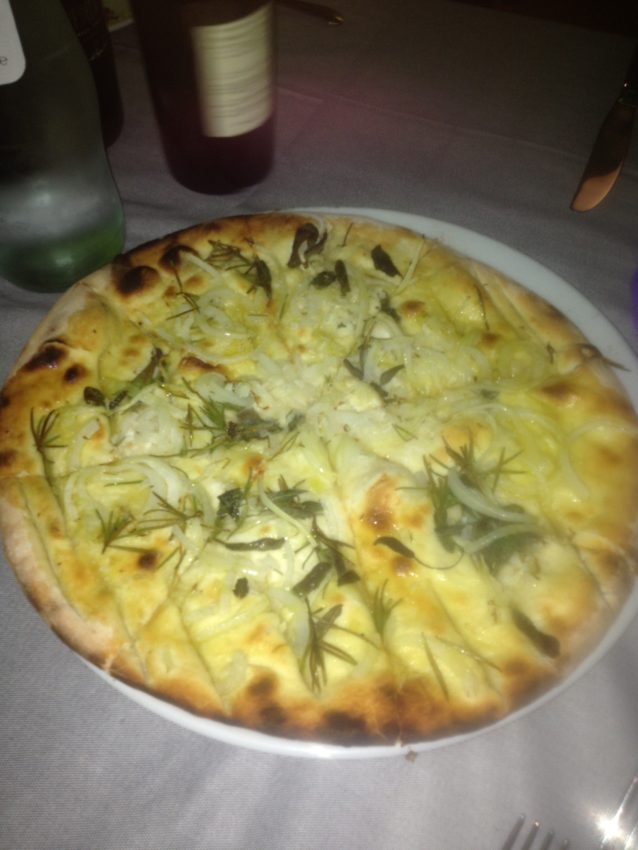
The Terre dei Nappi is not one of them. Although you can see the lights of Assisi 12 miles away, Terre dei Nappi is way off the wine map. However, you don’t need a travel agency to find good wine in Italy. Antano’s Montefalco Rosso, made from Sangiovese and Cabernet grapes, was jaw-dropping good. Maybe it was the homey, down-to-earth setting of a family wine cantina but I bought a bottle and then a bottle of succulently sweet Passito right afterward.
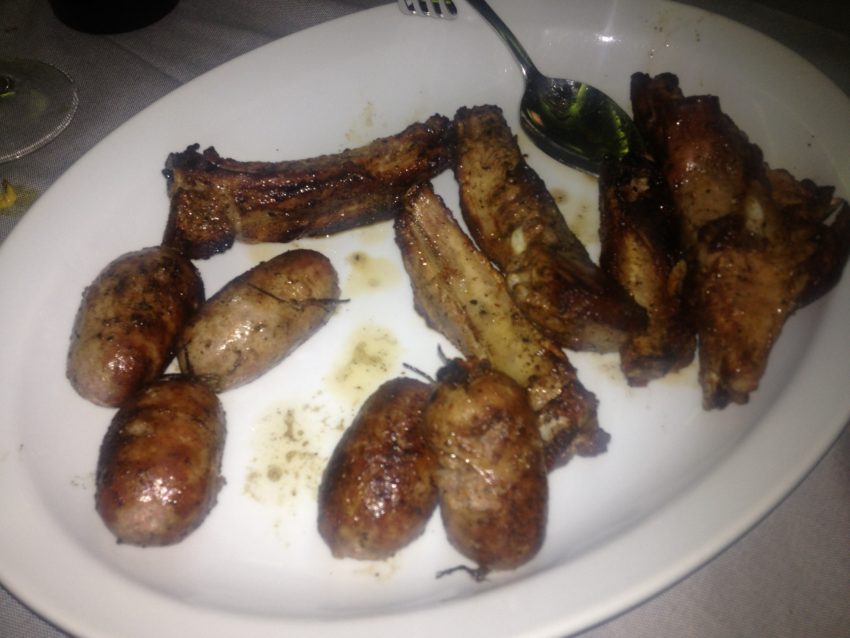
It was the perfect antipasti before arguably the biggest meal I’ve had in my life. Once in Amarillo, Texas, for a food column I tried to eat a 72-ounce steak. What I had in Foligno on this night made that steak feel like a meatball.
De Mai led us a short drive away to his Hotel Quintana Restaurant. I found it curious that “restaurant” is spelled in English and not the Italian “ristorante.” When I saw the portions I understood why. What proceeded was an eight-course meal that put Alessandro into a food coma and me wondering how the hell I grew a paunch in 90 minutes. Fortunately, every dish was better than the last. This wasn’t the Circus Circus midnight buffet.
The lineup:
* Lean sliced sausage and long, thin slabs of prosciutto.
* A focaccia pie with rosemary and sage.
* Crisp, thick pork cheek bacon with balsamic vinegar.
* Pajata, the heart, lung and liver of a lamb. (OK, some dishes were better than others.)
* Scrambled eggs filled with big chunks of tartufo, the savory mushrooms French gourmet Jean Anthelme Brillat-Savarin once labeled “the diamond of the kitchen.”
* Pappardelle cinghiale, big, fat pasta noodles with giant links of sausage on a plate the size of home plate.
* Lean, black link sausage with pork ribs that, unadorned with fancy BBQ sauces, could stand up to any pork ribs I’ve had in Texas or the Deep South.
* Cantucci, the famous hard Italian biscotti cookie with raisins.

As I picked the last bit of pork wedged between two teeth, feeling more like a caveman than an intrepid traveler, I looked over at Alessandro. His chin was on his chest. His eyes blinked rapidly. I thought he was going into post-pork shock. I once saw a lion in Tanzania have the same reaction after he ate a wild boar.
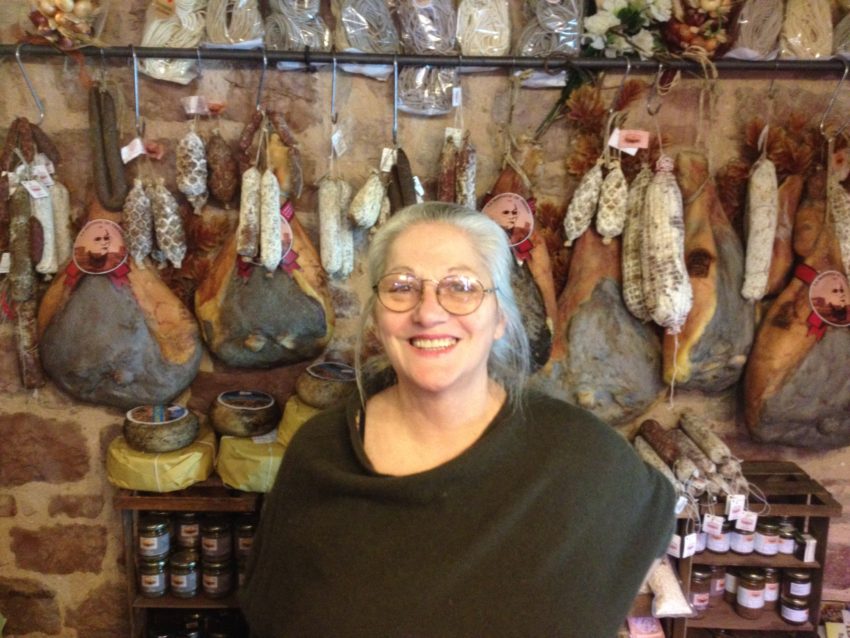
We all survived, however. In fact, we digested enough the next day to stop off on the way back to Rome in Spello. It’s a walled city embraced by ancient stone archways and seemingly a blooming flowerbed hanging from every window. It’s also home of La Bottega di Teresa where the bespectacled, gray-haired but pretty Teresa rides herd in one of the best alimentaris in Central Italy. Bulging logs of cinghiale and sausage hang from the walls over giant wheels of bright yellow cheeses. In the front window, actor Hugh Grant is pictured hugging Teresa, obviously after eating some of the wild boar sausage I eagerly bought after one sample taste.

Robert Della Vedova, the Australian-Italian friend who accompanied us, says he’s including these two days in a future gastro tour he’s organizing for tourists. He may have his first customer in me.


December 18, 2014 @ 5:16 am
John, are you sure it was “scrambled eggs” and not a “frittata”? To have a frittata with dinner is, in my experience in Italy, a lot more common than scrambled eggs. Spello is lovely. I went there on my last trip to Umbria, instead of going to Assisi. In order to be a bit more off the beaten track.